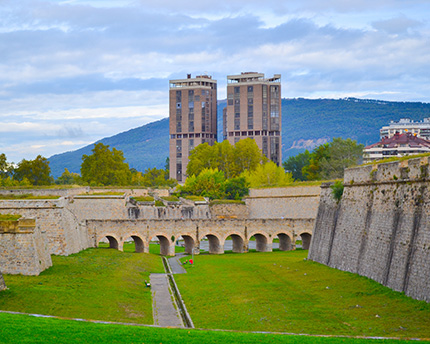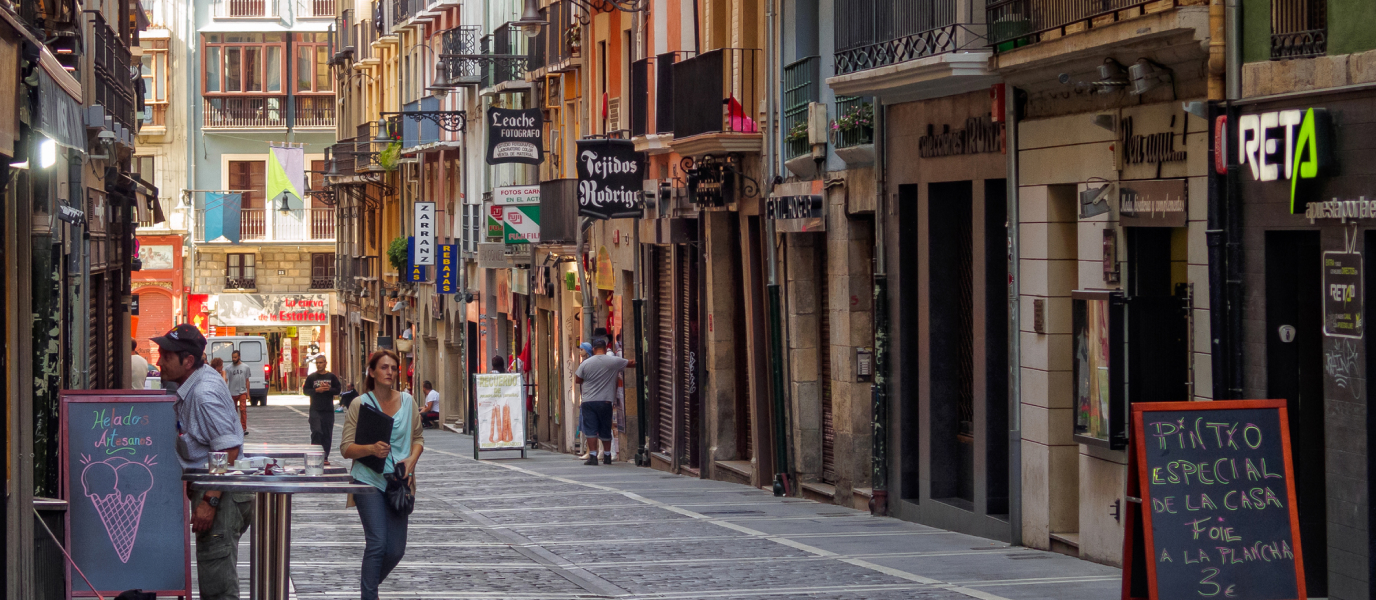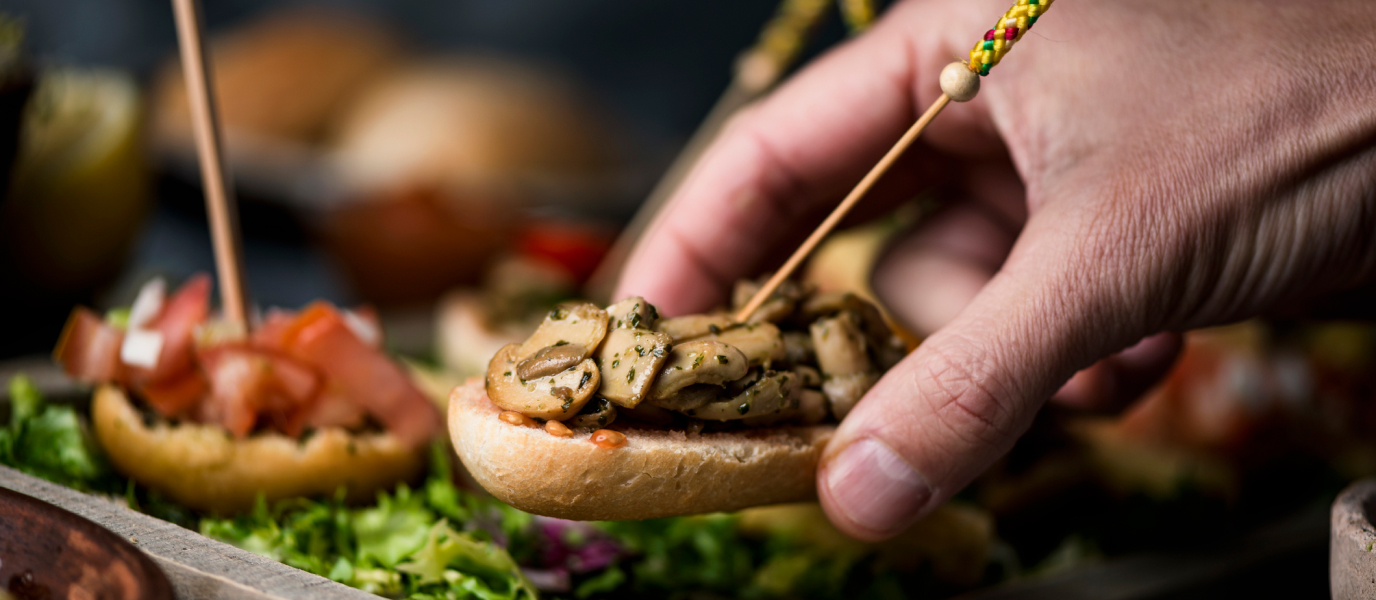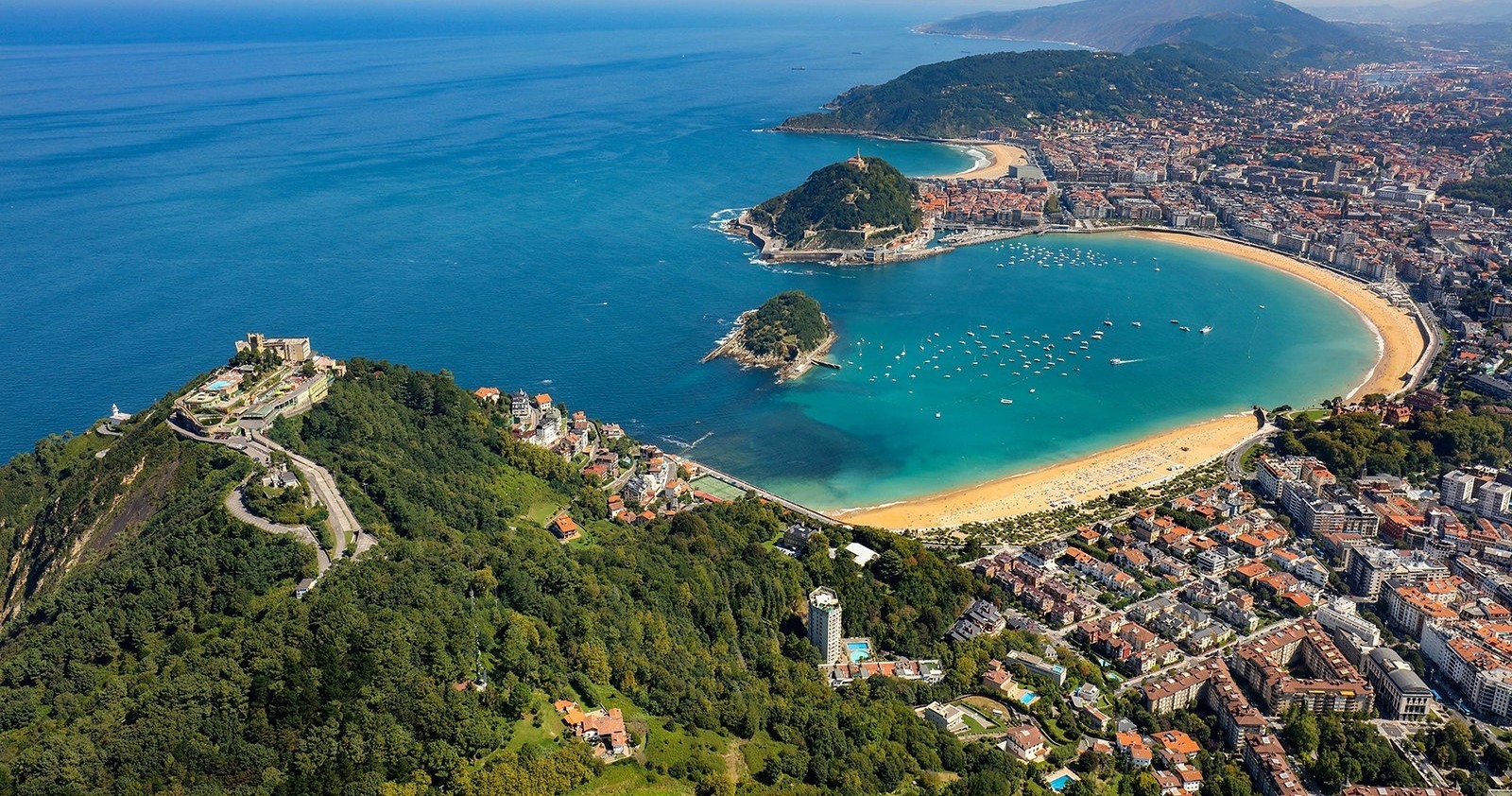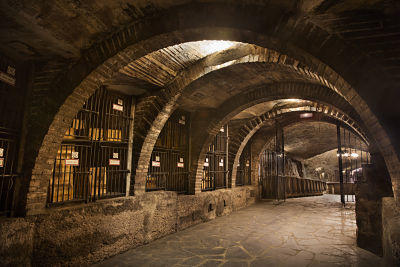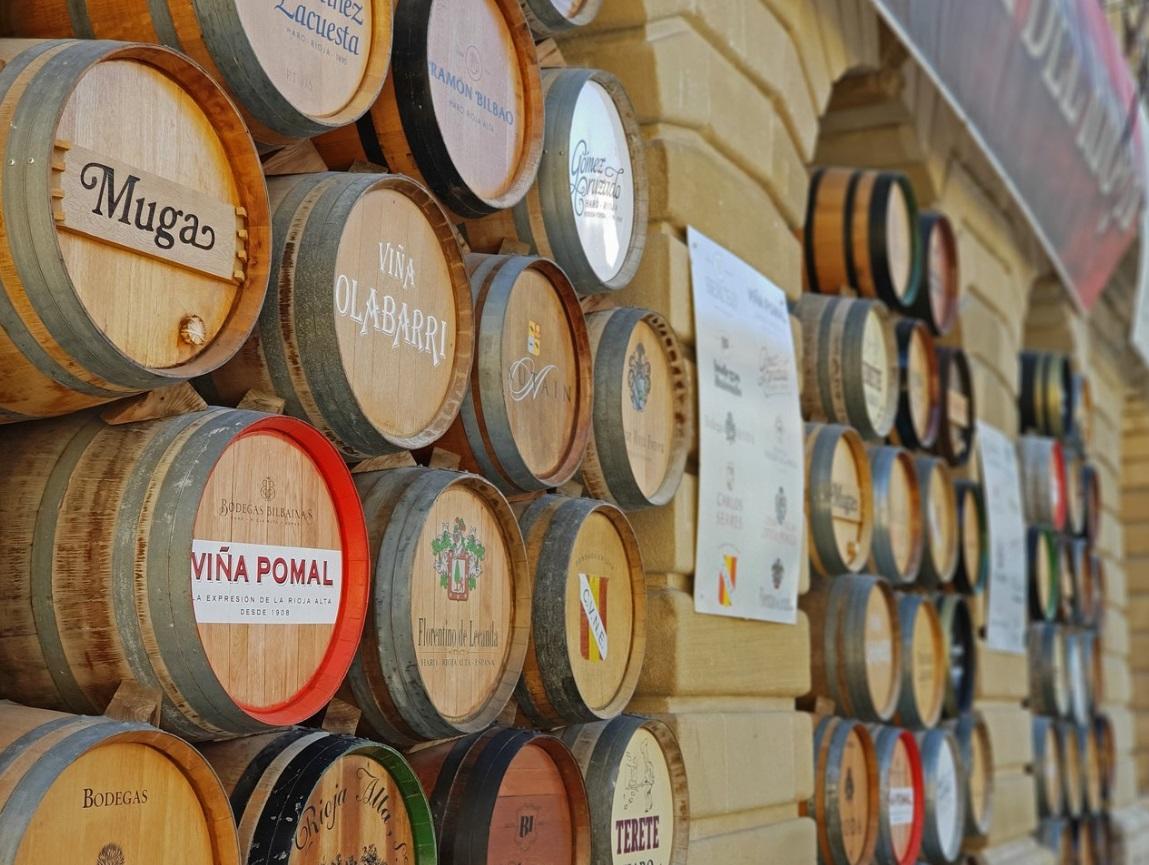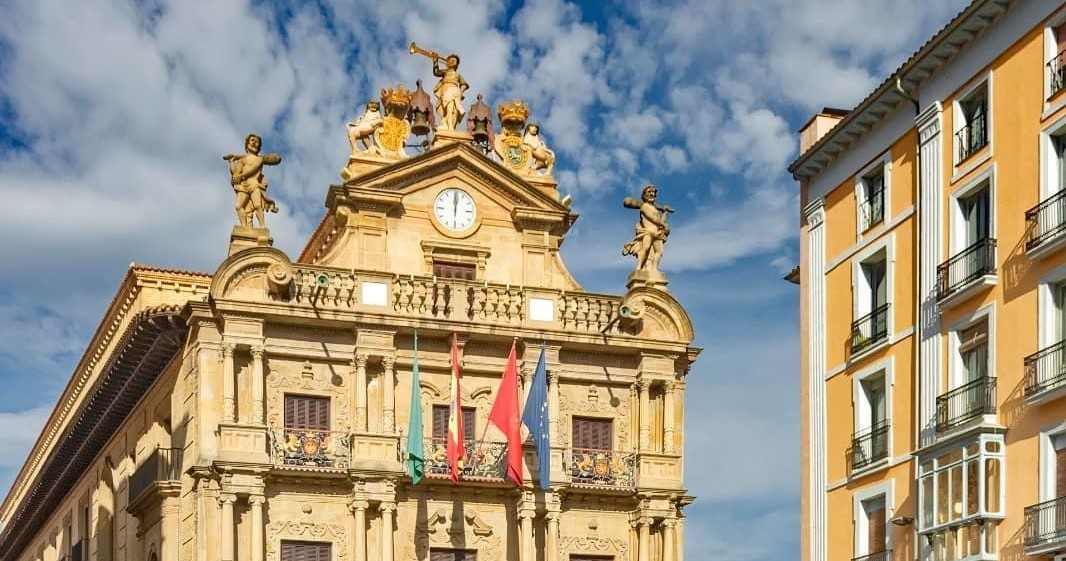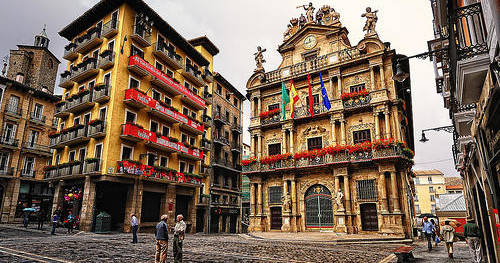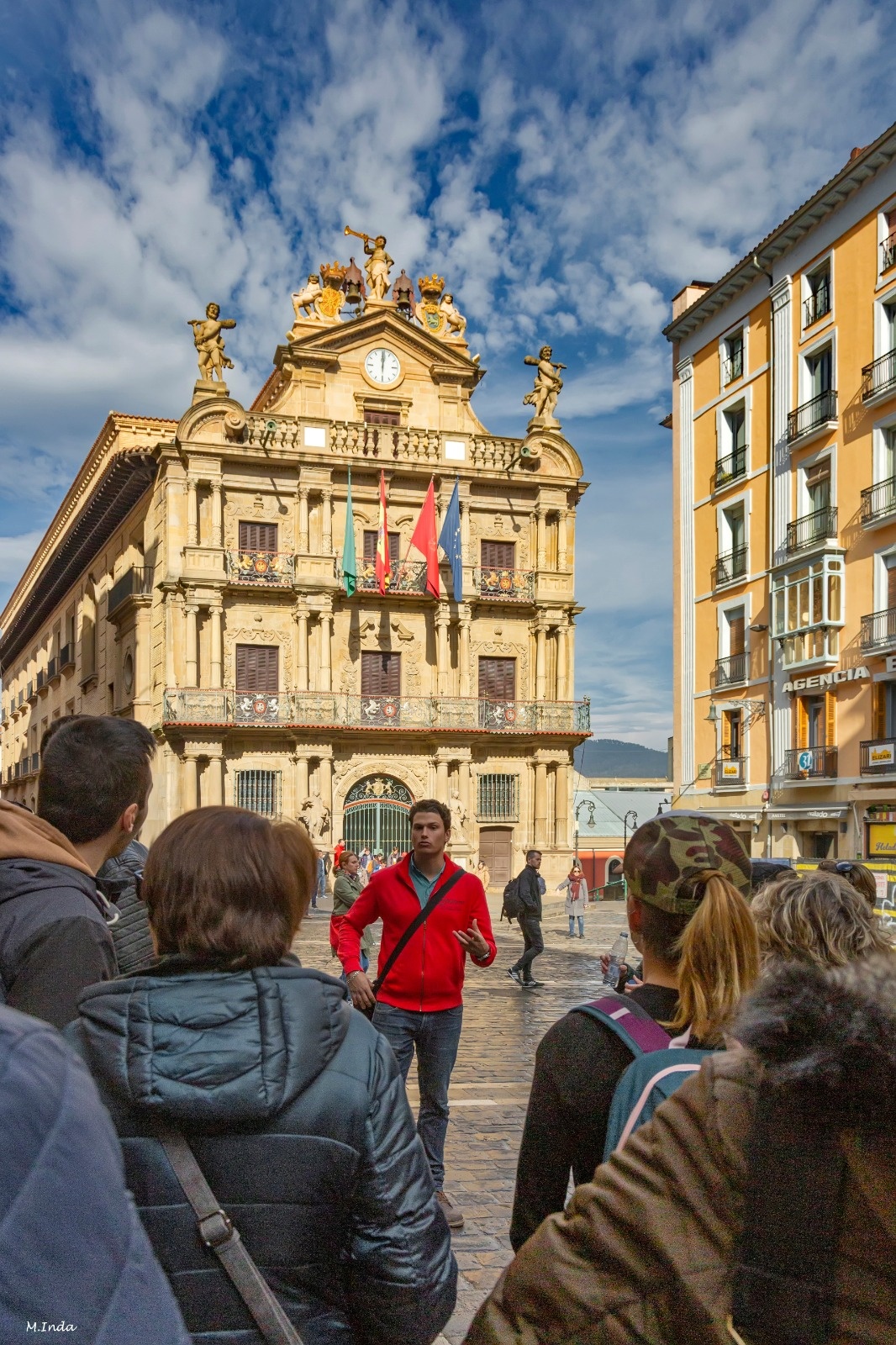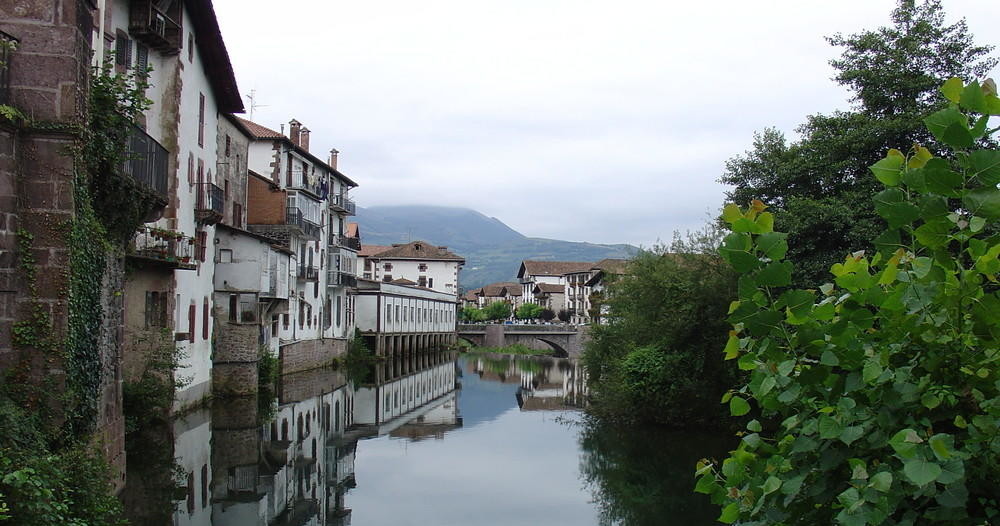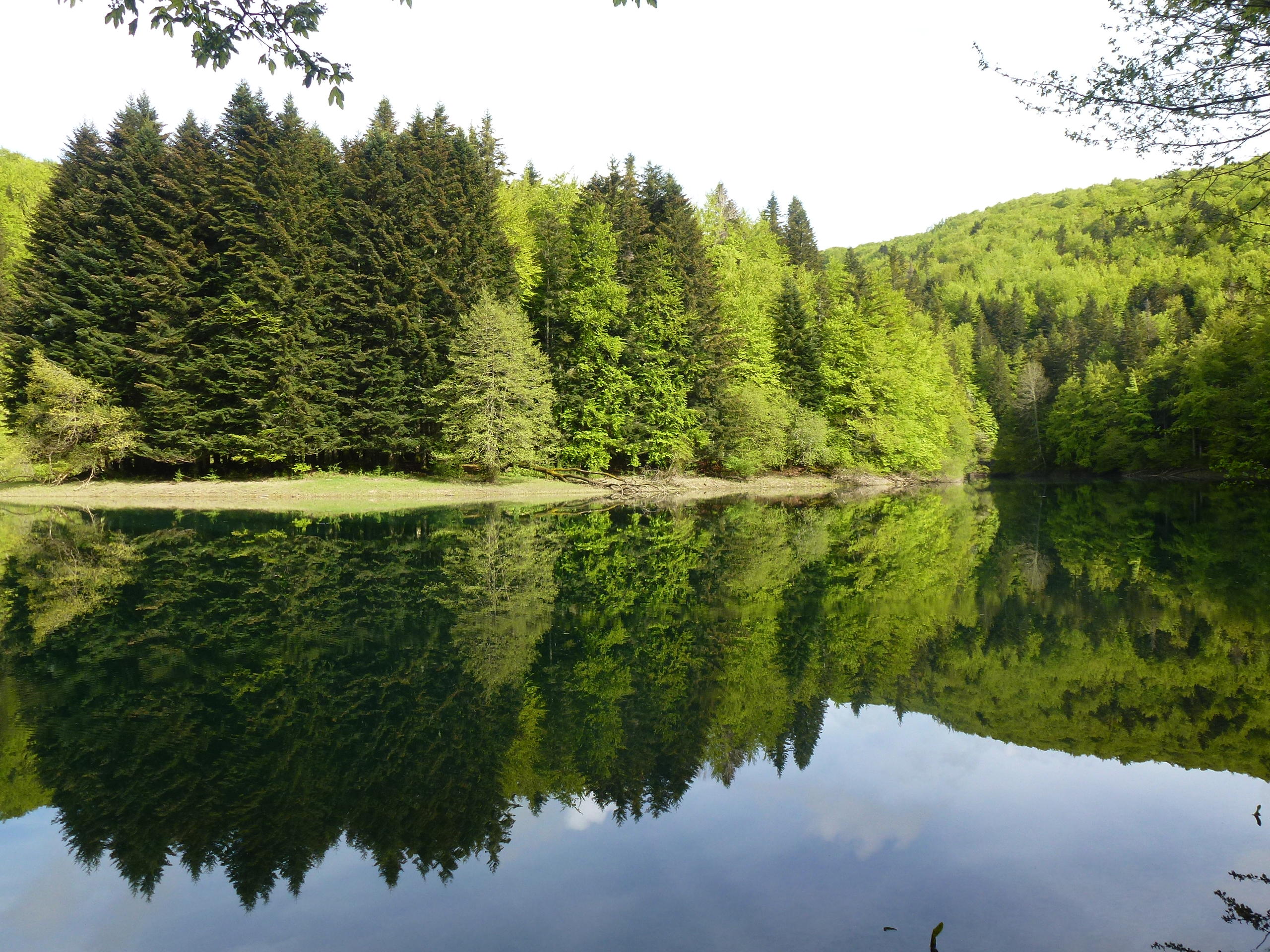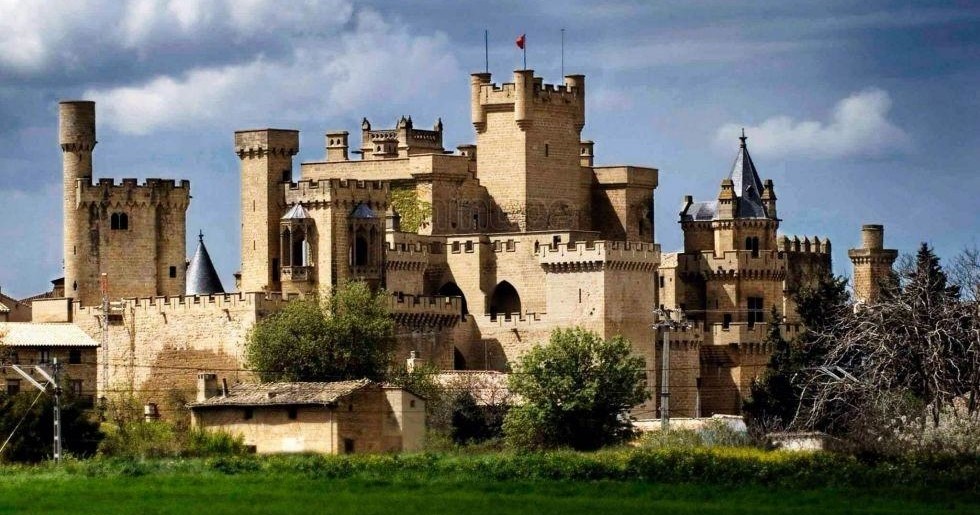A first and foremost consideration must be borne in mind regarding typical Navarran food: this region can rightly boast of having one of the best vegetable gardens in the country. The La Ribera district, which coincides geographically with the Ebro Valley and is located around Tudela (link to the corresponding URL?), produces all kinds of vegetables and pulses, and also has some fruit trees.
It is the basis for the typical food from historic Navarre. There is also a considerable number of restaurants (link to URL Where to eat in Pamplona) that have long been experimenting with the diverse ingredients produced in the region. They are not only of vegetable origin, but also of animal origin, especially in the Pyrenean valleys, where cows graze on rich pastures to produce milk and meat highly prized by gourmets. There is also the fish caught in the region’s rivers and in the distant northern seas.
Below are some of the most representative typical Navarran dishes.
Piquillo peppers stuffed with cod
Piquillo peppers, with their intense red colour and their sweet and delicate flesh, are one of the most representative typical Navarran products. Produced mainly in the La Ribera district, they combine perfectly with cod, an ingredient which, although caught in the North Sea, has been part of the regional cuisine and, in general, of Spain’s inland since time immemorial.
The stuffing is made with a béchamel sauce to which the cod gives flavour and consistency. Then everything is dressed with a sauce made from leeks, tomatoes, garlic, flour, olive oil and salt.
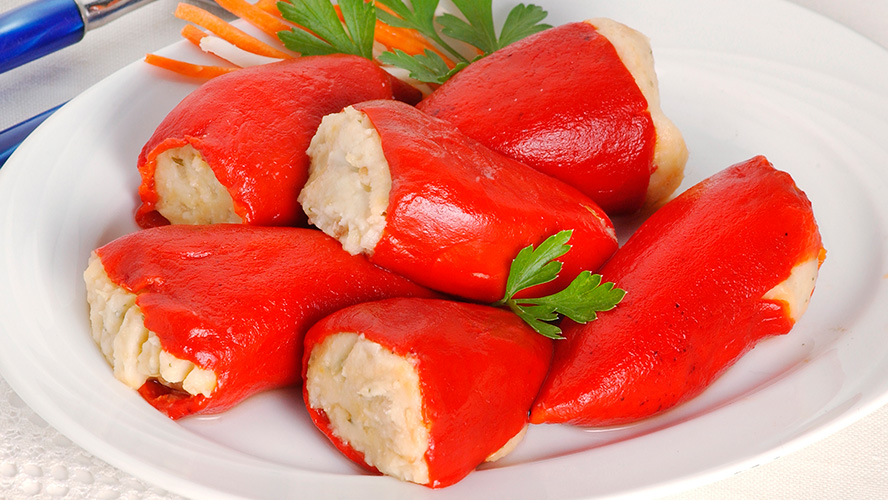
Asparagus
Asparagus is the other typical product from the Navarran vegetable gardens. The main one is the asparagus from Tudela, which has its own designation of origin. It is white (although it is also grown in its natural green colour) and fairly large, especially the asparagus known as cojonudos. Asparagus is usually eaten cooked in water and salt, once peeled, and dressed with a vinaigrette sauce or mayonnaise.
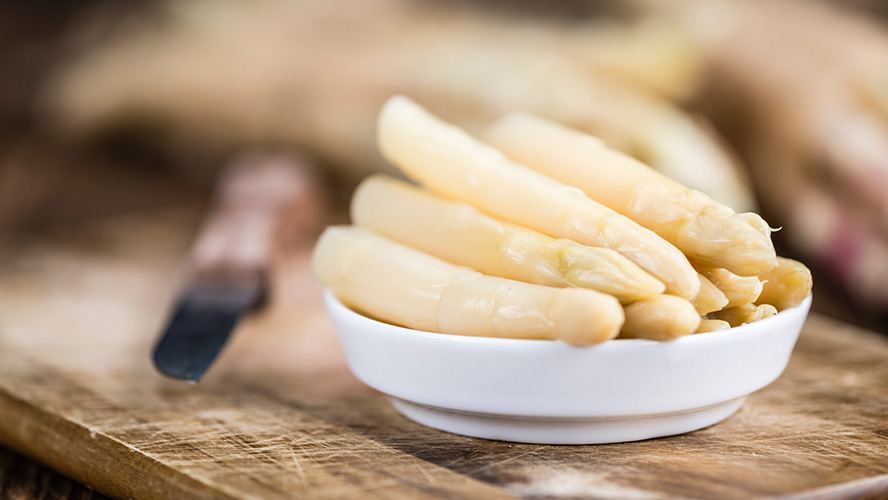
Lamb with chilindrón stew
For a long time, this typical Navarran dish was eaten solely during the main festivals. Today it is part of the daily recipe book in numerous regional restaurants and in many households. This is a stew made from the tender meat of lamb leg or shoulder. The meat is sautéed with tomatoes, onions, garlic, dried nora peppers, lemon peel, parsley, olive oil, water and salt until everything is mixed together.
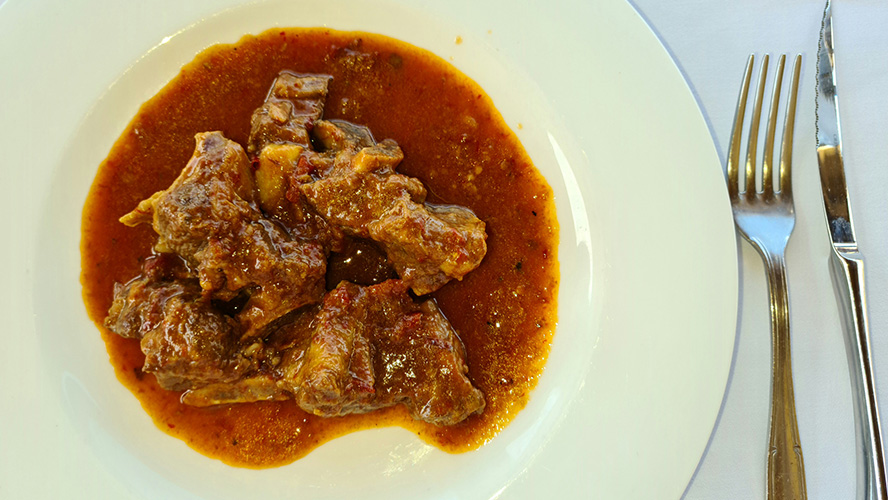
Once prepared, it is usually served at the table in the same earthenware dish in which it was cooked and served with boiled or fried potatoes. It is also sometimes made with mushrooms and escargot.
Grilled T-bone steak
This dish, which uses large pieces of ribs taken from the magnificent Navarran veal, does not need much introduction. The animals are generally reared in the Pyrenean valleys. The T-bone steaks are grilled with wood or charcoal. A short but powerful cooking is recommended since this seals the outside but keeps the inside juicy.
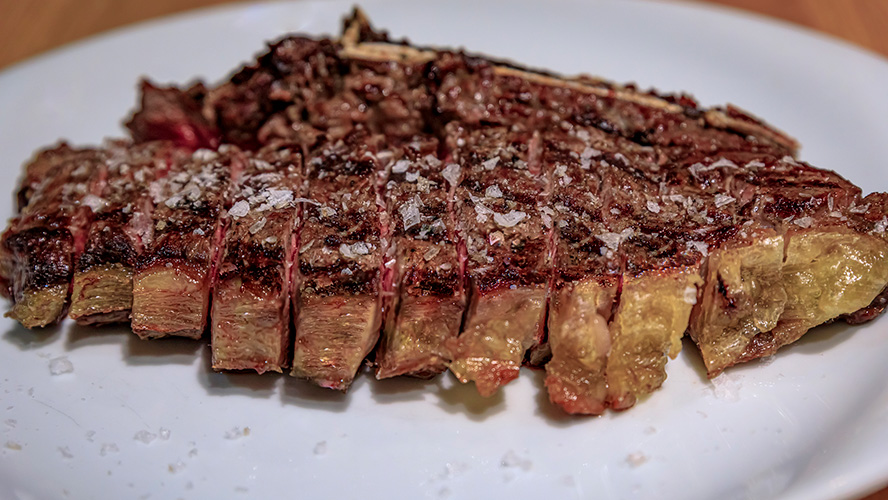
Artichokes with clams
This typical Navarran dish is very popular on the winter menus of many restaurants and in households. The artichokes are cooked in a sauce made from white wine, flour, water and parsley in which the clams have previously been boiled until they open. The tasty clams are added again at the end and presented on the plate with a dash of olive oil.
Chistorra sausage
Chistorra (or txistorra) is the best-known Basque-Navarran sausage. It is made from minced pork seasoned with garlic, salt and paprika. It is usually cooked on a wood or charcoal grill, although it is also prepared fried or even boiled, and served with some stews. Chistorra is never misleading: it is both a calorie-dense and hearty product (at least 70% of its composition is fat). Despite knowing this, it is absolutely irresistible.

Vegetable stew
In an area where vegetables are so important for the economy, it makes sense that one of the most typical dishes is the vegetable stew. All the vegetables (asparagus, artichokes, broad beans and peas) are cooked separately, with cooking times adapted to their firmness, and then mixed together. To do this, tender garlic in olive oil and Serrano ham are sautéed in a casserole dish (preferably earthenware) and asparagus is then added to the cooking water, reducing the liquid until it becomes a thick sauce.
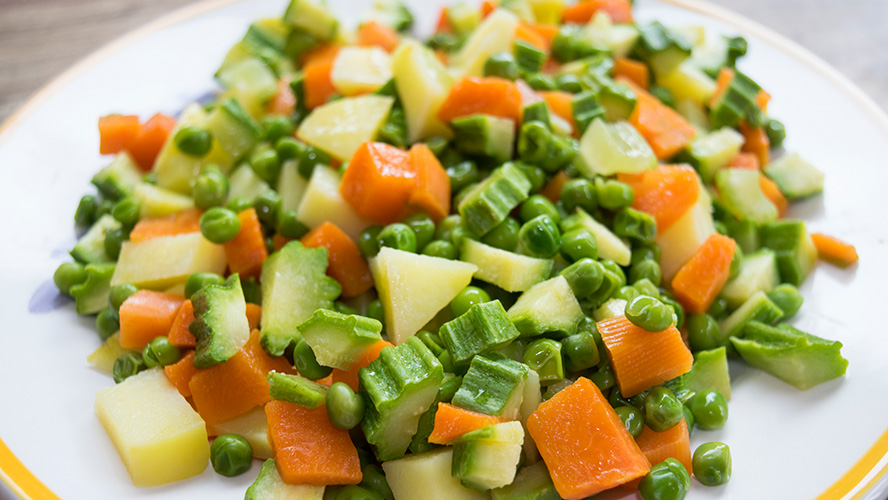
Navarra-style trout
As a major typical regional dish, Navarra-style trout most likely originated along the rivers that flow down from the Pyrenean peaks. Today this dish is not only part of Navarran cuisine, but also of the whole country. Once cleaned and gutted, the trout is stuffed with a slice of ham, dipped in wheat flour and then fried in plenty of olive oil. It is served on a plate with a bed of baked potatoes and sometimes with another slice of fried ham on top.
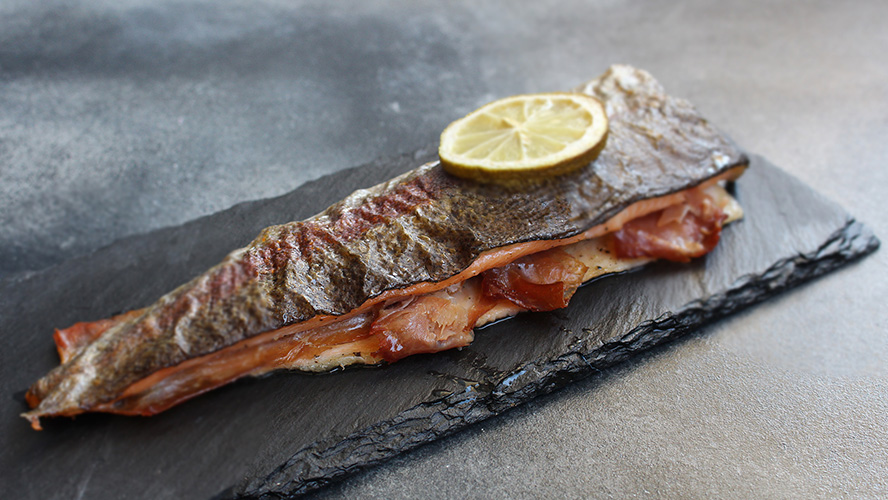
Navarra-style pocha beans
Pochas are beans that are harvested before they ripe, when they are still tender (in the summer period). They are eaten without being dried out, which significantly reduces the cooking time and adds really delicious (green) flavour nuances. Navarra-style pocha bean stew is made with vegetables such as tomatoes, peppers, leeks, onions and garlic, although the protein provided by pork sausages can also be added. At the table, each pocha bean stew is served with one or two piparra peppers.
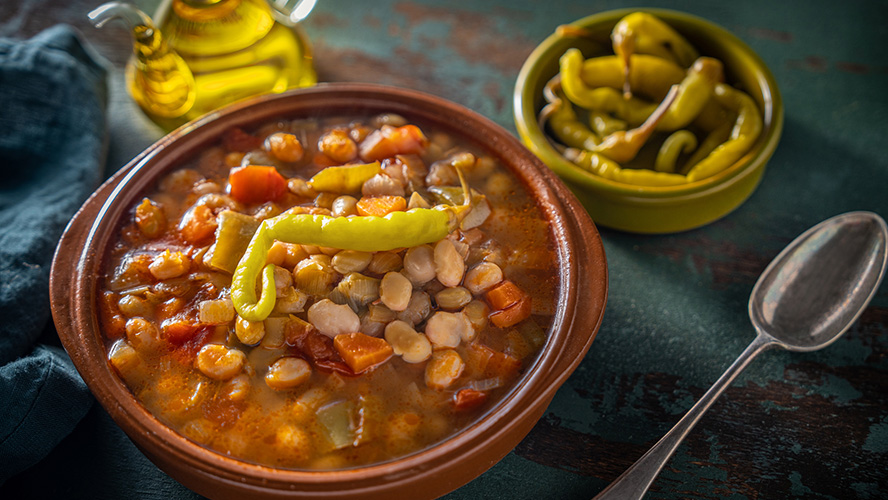
Oven-baked horse mackerel
Horse mackerel is a blue fish. In Navarra, it is baked in a way that is as simple as it is succulent: the fish is cut open, placed in the oven tray with fish stock, a dash of white wine, salt and vinegar and baked at high heat for about ten minutes. Olive oil, garlic, chilli and fresh parsley are stir-fried and then poured over it.
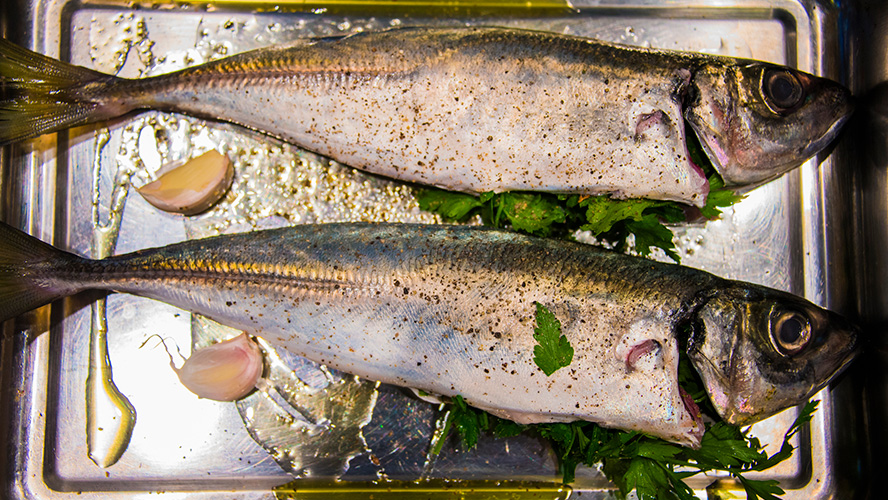
Ajoarriero-style cod
This typical Navarran dish is shared with other neighbouring regions, mainly La Rioja. It consists of stir-frying desalted and rehydrated cod, as well as vegetables such as tomatoes, onions, piquillo peppers, garlic, choricero peppers, nora peppers and chilli. White wine is then poured over it. It is usually served with slices of bread and hard-boiled egg.
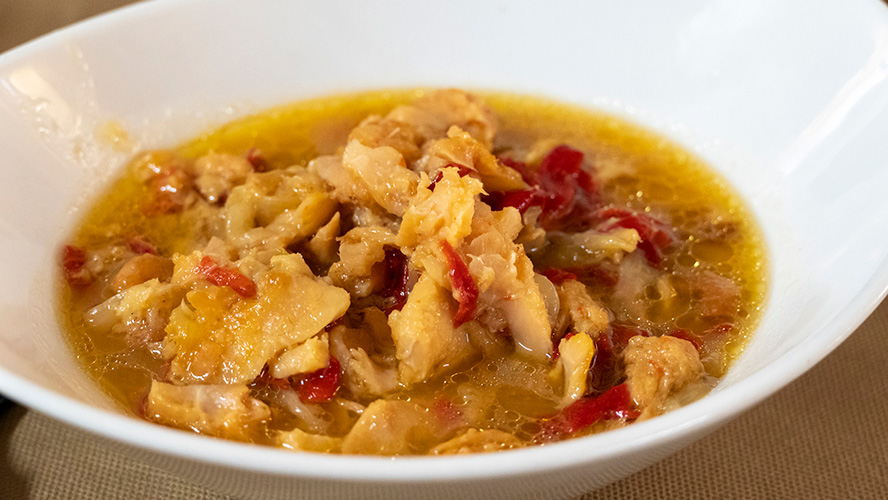
Pacharán liqueur
A good typical meal in Navarra is usually rounded off with this aniseed-flavoured digestive liqueur made from the ripening of sloes. These wild fruits are very similar to blueberries and are also known as blackthorns or wild plums. Traditionally, each family in Navarra collected the fruit during the summer and then made their own batch of Pacharán liqueur, which they drank throughout the year.

Typical Navarran desserts
Perhaps the most delicious typical Navarran dessert is a large portion of Roncal cheese (with designation of origin) served with honey or quince jelly. Nevertheless, there are many other desserts that will delight those with a sweet tooth.
They include leche frita, made from a dough consisting of milk, sugar and flour and coated with egg. The dough is divided into regular squares, which are fried in plenty of olive oil and then dipped in sugar.
Also very typical are the cream-filled canutillos (pastry cornets), which can be found in many of the region’s bakeries.
Very well known (and eaten) in this region are also the Salcedo coronillas (coronet pastries), the Reyno trenza (braided pastry), the Aoiz cuajada (junket) and the sopacana (soup made with milk, bread, sugar and cinnamon).
Hotels with restaurants in Navarra
Among the hotels with a restaurant in Navarra and, more specifically, in its capital, is the Occidental Pamplona. In the modern buffet dining room of this centrally located 4-star accommodation, during breakfast you can enjoy the most representative typical Navarran dishes as well as international cuisine.
The hotel’s lobby bar serves a broad range of drinks, from coffee and tea to all types of aperitifs, and always with a personalised service.




































































